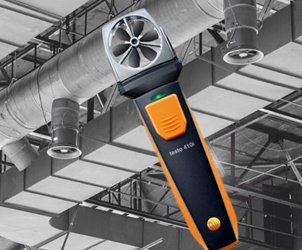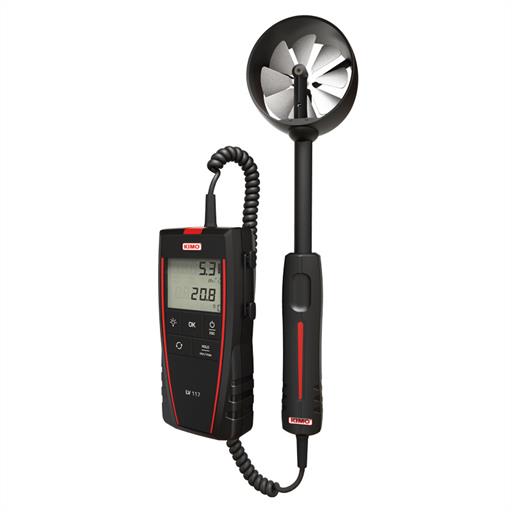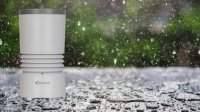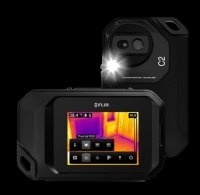Flow vs Velocity. What's the difference?

In industrial, agricultural, commercial, and academic environments, flow and velocity are common terms used to describe the output of solids, liquids, or gases from equipment, infrastructure, structures, or vehicles.
Airflow and air velocity are common measurements made by HVAC test and balance contractors, health and safety specialists, facilities managers, and ventilation system installers to assess the performance of an airflow system, including balance, efficiency, and cost-effectiveness. While the terms flow and velocity relate to one another, the misunderstanding surrounding these terms often leads to their incorrect use.
Velocity
Velocity is the distance an object (solid, liquid, or gas) moves over time. Examples of air velocity measurements include meters per second (m/s)or kilometres per hour (km/h).
Flow
Flow is a measure of an object's output (solid, liquid, or gas) in terms of volume per unit of time. Litres per second (l/s) or cubic meters per hour (m³/h) are examples of 'Flow' expressed.
Below is a basic airflow calculation that assumes uniform flow conditions and does not account for friction loss.
Airflow Calculation Rectangular Duct:Q=AvWhere Q is the Velocity of Air, A is the cross-sectional area (width x length), and V is the linear velocity (average speed) of the air. Airflow Calculation Circular Duct:
A=πr2 |
Figure 1 Basic airflow calculation for a rectangular and circular duct.
Anemometers for Measuring Flow and Velocity
The most common instrument type for measuring airflow is the anemometer. Anemometers make taking measurements a straightforward process. You can find an extensive range of meters to measure air velocity, calculate airflow, and provide you detailed results within seconds without needing to perform time-consuming manual calculations like those illustrated in Figure 1.
Different versions of anemometers varying specifications of accuracy, measurement units, and probes. Probe types for measuring airflow and air velocity include hot-wire anemometers and vane anemometers.
.png?Action=thumbnail&algorithm=fill_proportional&width=300) Hot-Wire Anemometer
Hot-Wire Anemometer
Hot Wire Anemometers measure wind speed using the principle that the cooling effect of wind flow extracts heat. The operating principle involves a fine wire heated a few degrees above the ambient temperature. A thermostat-controlled heating mechanism will try to keep the wire at a constant temperature while any air flowing past will start to cool it. The meter will then measure how much current was needed to keep the wire at a constant temperature and simultaneously convert this data to an air velocity reading.
Testo 405i Smart Hot Wire Anemometer
Product Code: IC-0560-1405
Compact and professional, the IC-0560-1405 hot wire anemometer measures air velocity, temperature, indoor air velocity, and volume flows. The extendable, wireless probe sends collected measurements to the free Testo smart tools app via Bluetooth.
Specifications
|
Air Velocity Measuring Units: m/s, fpm Measuring Range: 0 to 30 m/s Accuracy: 0 to 2m/s±(0.1 m/s + 5 % of m.v.) and 2 to 15 m/s ±(0.3 m/s + 5 % of m.v.) |
Air Flow Measuring Units:m³/h, cfm, l/s Temperature Measuring Units: Measuring Range: -20 to +60 °C Accuracy: ±0.5 °C |
 Vane Anemometer
Vane Anemometer
Vane anemometers have many light vanes connected to a shared rotating spindle (commonly known as an impeller). Anemometers typically measure each time a vane rotation passes a reed switch within a particular timeframe. The meter then converts the vanes' rotational speed to an air velocity measurement.
Thermo-anemometer with 100mm vane probe
Product Code: LV110S
The LV110S is an intuitive vane probe anemometer that offers airflow calculation, automatic averaging, hold/minimum and maximum functionality, detection of flow direction as well as user-selectable duct dimensions.
Specifications
|
Air Velocity Measuring Units: m/s, fpm, km/h Measuring Range: From 0.3 to 35 m/s Accuracy: From 0.3 to 3 m/s : ±3% of reading (±0.1 m/s) and from 3.1 to 35 m/s : ±1% of reading (±0.3 m/s) |
Air Flow Measuring Units: m³/h, cfm, l/s, m³/s Temperature Measuring Units: °C, °F Measuring Range: From -20 to +80 °C Accuracy: ±0.4 % of reading ±0.3 °C |
Conclusion
When assessing the performance or installing a new airflow system, the measurement of airflow and velocity ensures the balance, efficiency, and cost-effectiveness of a heating, cooling, or ventilation system.
If you would like more information on airflow, air velocity, or anemometers, speak with an Instrument Choice Scientist. We're here to help! Call 1300 737 871 or email [email protected].
Also interesting
A tipping bucket rain gauge is by far the most popular instrument used today by home weather aficionados and weather professionals, like meteorologists, to collect and to measure precipitation in an area over time.
With so many in use, Instrument Choice scientists have set out five essential tips to help you can get the best results possible from your tipping bucket rain gauge.

Thermal cameras are important scientific tools deployed in many applications by technicians such as building inspectors, pest controllers, plumbers and electricians, just to name a few.
There is a huge range of thermal cameras on the market, all with different features and specifications. So, if you were seriously looking to buy a thermal camera how do you sort out the wheat from the chaff? The truth is, it’s subjective. It depends on your needs and intended application. In the guide below we will define the five key performance criteria for selecting a thermal camera, explain the features you can get on different models and, with some contrasting examples, shed some light on the differences.

